I. Introduction
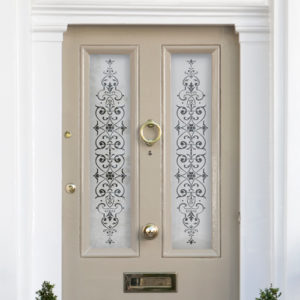
Whether it’s to reduce waste, save money or to try something more creative, reusing and updating doors around your home can be a great project to try out. Brand new doors can be an expensive, specialist job especially if you have doors that aren’t a standard size. Let’s take a closer look at upcycling doors with new window film and how it can save you time, money and waste.
A. Definition of upcycling
Upcycling is the process of repurposing old or discarded materials to create something new and sometimes more valuable. It’s a creative, sustainable and environmentally friendly way to reduce waste and conserve resources. It’s basically a way of reusing and updating things you have around the home to either make them look better, work better or to change their purpose.
B. Benefits of upcycling
Upcycling can be a really personal thing. It allows you to do something that’s creative and practical, and means you can create something exactly how you want it instead of having to choose from available options. But they aren’t the only benefits of upcycling – it can be better for your planet and the budget too.
The main benefits of upcycling are:
- Reducing waste
- Saving energy and resources
- Reducing the need for new materials
- Saving money
- Allows you to create exactly what you want
C. Focus: Upcycling doors with new window film
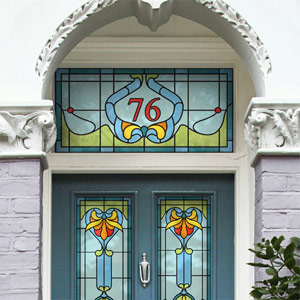
In this blog post, we’ll focus on upcycling doors with new window film to refresh and update the doors in your home. It doesn’t need to be difficult or expensive, and you can even choose your own custom designs.
II. Why Upcycle Doors with Window Film
Wondering why you’d upcycle doors with window film rather than just splashing out on new doors in the home? Here’s why you should be thinking about upcycling rather than replacing:
A. Environmental benefits
Upcycling doors with new window film has several environmental benefits. By upcycling old doors, you’re reducing the need for new materials, which reduces the environmental impact of manufacturing and transportation. It also means less waste – in the UK over 222.8 million tonnes of waste hits the landfill annually, some of which will be discarded household items like doors and doorframes. Additionally, window film can help conserve energy by reducing the amount of heat and light that enters and exits your home.
B. Cost-effective solution
Upcycling doors with new window film is also a cost-effective solution compared to buying new doors. Window film is an inexpensive and effective way to upgrade your doors, plus the installation process is simple enough that you can do it yourself at home. It’s low on mess, waste and transport costs so it’s significantly more budget-friendly, especially if you’re in the middle of massive renovations or looking to save money.
C. Enhancing privacy and security
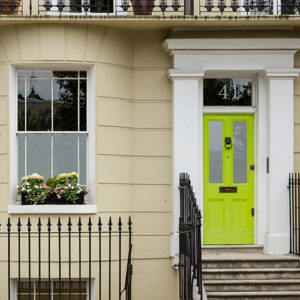
Window film can also enhance the privacy and security of your home. Frosted or mirrored window film can obscure the view into your home, while still allowing light to enter. This can deter burglars and make you feel more secure in your home as people can’t see into the property as easily, and valuables can be hidden out of sight. This works well if you have internal doors that have glass in them too, as you can easily make things more private.
D. Aesthetic improvements
Window film can also improve the look of your doors. There are a variety of window film designs to choose from, including frosted, stained glass, seasonal and patterned designs. You can even get custom window films where you can create your exact window film design and have it printed up, ready to add to your window or door. No need to pay for door removal, disposal and replacement (plus the mess that that can leave behind you).
III. Types of window film suitable for upcycling doors
There are lots of different types of window film available. The type you choose depends on your personal taste, where you’re upcycling your doors and the end result that you want. Here are some tips for choosing the right window film when it comes to upcycling doors.
A. Frosted window film
Frosted window film is a popular choice for upcycling doors. It obscures the view into your home or room while still allowing light to enter. It also creates a sleek and modern look for your doors that’s neutral enough for any style home. Rather than being a focal point, it blends into the rest of your decor perfectly.
B. Stained glass window film
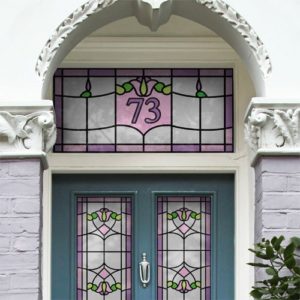
Stained glass window film can add a pop of colour and elegance to your doors. It’s available in a variety of colours and designs, from traditional patterns to more modern designs and is a great alternative to expensive stained glass. Plus you can even customise your own design if you have something specific in mind without it feeling draughty.
C. Patterned window film
Patterned window film can add texture and interest to your doors. It’s available in a variety of patterns, including geometric shapes, floral designs, bold designs or something more scaled-back if that’s your vibe. It’s affordable, decorative and can be swapped out as often as you want so you can quickly and easily change the look of any room.
D. Mirrored window film
Mirrored window film can enhance the privacy and security of your home while also reflecting light and making your space feel brighter. It’s great if you have doors that lead out to outdoor spaces where you don’t want people to see in, but you don’t want to ruin the aesthetic of your property. It’s way cheaper than installing one way glass too.
E. UV protection window film
UV protection window film can help protect your furniture and flooring from fading due to sun damage. It also helps to reduce heat and glare, making your home more comfortable. So whether you want to stop your home from overheating, keep heat in or just stop glare from getting in the windows without having to sit with closed curtains, then solar control film can help.
IV. Step-by-step guide to upcycling doors with window film
All of our window films come with clear instructions, and you can get in touch with us anytime if you feel that you need a little extra help or advice. You can even contact us before you order if you have any questions or there’s something specific you’re looking for.
Now that we’ve explored the types of window film suitable for upcycling doors, let’s dive into a step-by-step guide to using window film to upcycle, update and upgrade the look of your doors (internal and external).
A. Choosing the right window film
Before you begin, choose the right window film for your needs. Consider the level of privacy and security you want, as well as the design and IV. Step-by-step guide to upcycling doors with window film
Now that we have explored the types of window film suitable for upcycling doors, let’s dive into a step-by-step guide on how to upcycle your doors with new window film.
A. Choosing the right window film
Before you start, make sure to measure your door’s dimensions accurately. You can purchase window film in standard sizes or have it custom cut to fit your door, but either way it’s important to get the measurements right when you order.
Consider the purpose of the door and the level of privacy or natural light you want to achieve. For instance, if you want to block outside views while allowing natural light to enter, frosted or opaque film can be an excellent choice. Once you’ve made your choice and put in your order, it’s just a case of waiting for it to arrive.
B. Preparing the door
One you’re ready to install, start by cleaning the door thoroughly with soap and water to remove any dirt, dust, or debris. Dry it completely with a clean cloth. If your door has any dents, scratches, or cracks, make sure to repair them before applying the window film and give it time to dry or set before you start installing your window film.
C. Measuring and cutting the window film
Measure the door’s dimensions and cut the window film accordingly, leaving a few extra inches on all sides to ensure it covers the entire glass surface. Remember the old adage “measure twice and cut once”? Keep that in mind when it comes to this step. You can always re-measure but once something’s been cut, that can’t usually be put back together.
D. Applying the window film
Spritz some water with a few drops of soap on the glass surface to create a lubricating layer for the film to slide into position. Then carefully align the film with the glass surface, ensuring that it is level and centred. Use the application tool we send to run over the back of the film to press out any bubbles or wrinkles. Start from the centre and move outwards towards the edges, removing excess water and air as you go.
E. Trimming and final touches
Trim any excess film along the edges of the door using a sharp blade or scissors. Run the tool over the film once again to ensure that it is firmly attached to the glass and then leave it to dry off in place.
V. Creative upcycling ideas and inspirations
Upcycling doors with window film can enhance the aesthetic appeal of your home while reducing waste, saving you money and conserving energy. Here are some creative ideas and inspirations for upcycling your doors:
A. Sliding barn door
Transform your old door into a sliding barn door using frosted or stained glass window film. This is a perfect way to add a rustic touch to your home decor while ensuring privacy. You can go as far with this theme as you want, adding a slice of the countryside to a modern home or keeping it consistent if your home is more rustic.
B. Front Door

Make your front door more welcoming and visually appealing by adding a patterned or decorative window film. You can opt for a frosted film for privacy or a stained glass film for an elegant touch. It can even be totally customised or reflective to fit in with the look and style of your home.
C. Back Door
Add a touch of personality to your back door by upcycling it with a colourful patterned window film. You can also use mirrored film to create a reflective surface that adds depth and dimension to your outdoor space. It’s also important for security and stopping unwanted guests from looking into your home and seeing what’s in there.
D. Old cupboard
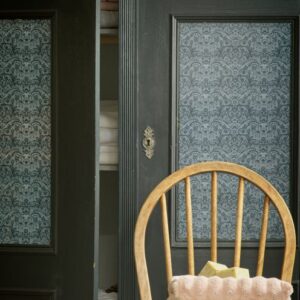 Upcycling old cupboards with window film is a great way to give your home a fresh and updated look without having to invest in new furniture. By applying window film to the doors of your old cupboards, you can transform them into something completely new and unique, creating something that fits with your style. It’s also way more environmentally – and budget – friendly than throwing away perfectly good furniture.
Upcycling old cupboards with window film is a great way to give your home a fresh and updated look without having to invest in new furniture. By applying window film to the doors of your old cupboards, you can transform them into something completely new and unique, creating something that fits with your style. It’s also way more environmentally – and budget – friendly than throwing away perfectly good furniture.
VI. Maintenance and care for your upcycled door
Window film is pretty low maintenance, but there are some things that you should keep in mind to keep it looking its best for as long as possible.
A. Cleaning tips
It’s important to keep your upcycled door clean to maintain its appearance and prolong its lifespan. Window film is easy to clean, and you can use a damp cloth or sponge to wipe away any dirt or dust. Avoid using abrasive cleaning products or tools that could damage the film or the door surface.
To clean your upcycled door, use a soft cloth or sponge with warm soapy water. Avoid using abrasive cleaners or harsh chemicals that can damage the film or the door’s surface. Don’t scrub too hard and skip anything like a loofah. Keep anything that might stain the window film away from your door to avoid damage.
B. Window film replacement and removal
If your window film gets damaged or you want to replace it with a different design, it’s easy to remove and replace. Simply use a hairdryer or heat gun to warm up the film and gently peel it off the door. Clean any adhesive residue with rubbing alcohol or soapy water before applying a new film.
You can also easily remove it using a razor blade (carefully) or scraper. Spray the surface with soapy water and slowly peel off the film from one corner. If any residue remains, use a solution of vinegar and water to remove it.
C. Protecting the door from wear and tear
It’s important to take care of the door to avoid any damage or wear and tear. Avoid slamming the door or scratching it with sharp objects, and consider adding weather stripping to protect it from the elements. Regular maintenance such as painting or varnishing can also help preserve the door’s condition, away from the window film.
You want the door to stay in good condition and function properly, as well as looking good on the surface.
VII. Conclusion
Upcycling your old doors with new window film is a creative and sustainable way to refresh the look of your home while minimising waste and saving resources. By choosing the right type of window film and following a simple step-by-step process, you can transform your doors into works of art that enhance your privacy, security, and aesthetics.
From frosted and stained glass designs to patterns and mirrors, the possibilities are endless. Upcycling can be a great way to keep your home looking great without breaking the bank or doing all sorts of unnecessary work.